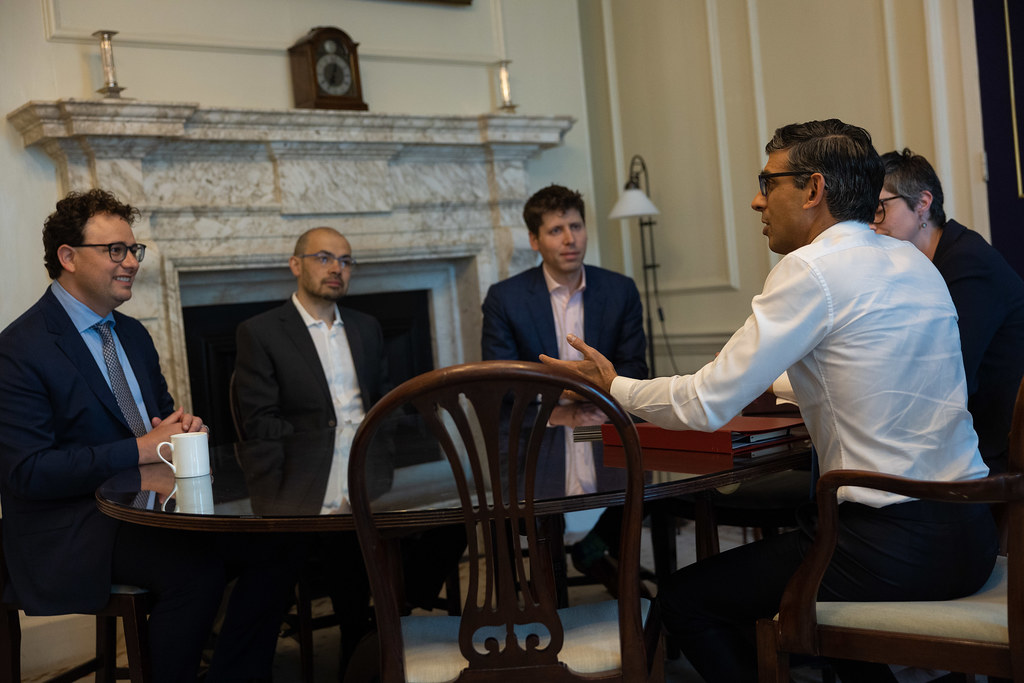
Standing on the hot Texas dirt of what will soon be a massive data center complex, OpenAI CEO Sam Altman unveiled what he calls the largest infrastructure push of the modern internet era: a 17-gigawatt buildout in partnership with Oracle, Nvidia, and SoftBank. In less than 48 hours, OpenAI announced commitments equal to the output of 17 nuclear plants, a plan that would require the amount of electricity needed to power more than 13 million U.S. homes. The sheer scale is staggering. At an estimated $50 billion per site, OpenAI’s projects could add up to about $850 billion in spending, which is nearly half of the $2 trillion global AI infrastructure surge that HSBC now forecasts.
Altman acknowledged the concern about the market getting overheated but told CNBC from the site of the first of OpenAI’s mega data centers in Abilene that he is confident. “We are growing faster than any business I’ve ever heard of before,” he said, insisting that the building boom is a direct response to soaring demand. He noted that ChatGPT usage has jumped tenfold in the past 18 months, and that a network of supercomputing facilities is required to maximize the capabilities of AI.
Addressing the ‘Bubble’ and ‘Bottleneck’ Concerns
Altman believes that the biggest bottleneck for AI isn’t money or chips; it’s electricity. This belief has led him to invest in nuclear companies, such as leading a $500 million funding round into fusion firm Helion Energy and backing fission company Oklo, because he sees nuclear power as one of the only energy sources strong enough to meet AI’s enormous demand.
Critics warn of a bubble, pointing to how partner companies like Nvidia, Oracle, and Microsoft have added hundreds of billions of dollars in market value on the back of their ties with OpenAI. Skeptics also say the system looks like a circular financing model, where partners invest in projects and then get paid back through chip sales and data center leases. However, OpenAI CFO Sarah Friar argued that the entire ecosystem is banding together to meet a historic surge in compute needs, and that the facilities being built now are aimed at bringing new capacity online next year, but the real question is what gets built for 2027 and beyond.
New Leadership and Partnerships
OpenAI’s partners are betting big on this future. Oracle has even reshaped its leadership, promoting Clay Magouyrk and Mike Sicilia to CEO roles to replace Safra Catz. Magouyrk, who ran cloud infrastructure, told CNBC that he sees “more and more demand” from end users and “near infinite demand for technology.” Nvidia is also fronting equity alongside its chips, including the new Vera Rubin accelerators, to power the next wave of AI workloads. The new data center in Abilene is being leased by Oracle.
As for OpenAI’s long-term relationship with Microsoft, Friar said they are a “major partner” and will continue to be a key supplier of compute capacity. She hinted that more developments with Microsoft are on the way, but that she’s “not fully ready to announce everything yet.”
A Glimpse into the Future
While investors will eventually expect a return, Altman said that the question of an IPO is “complicated.” He said he assumes OpenAI will someday be a public company, but he has “mixed feelings about it,” as being public could make long-term investments harder due to the need to meet quarterly expectations. In the near term, the story is about many billions of dollars being plowed into data centers in places like Abilene, New Mexico, and Ohio.
OpenAI isn’t just about infrastructure, though. In May, the company announced its stunning acquisition of Jony Ive’s nascent devices startup for about $6.4 billion. While in Texas, Altman hinted at hardware that could reshape how people use computers in their everyday lives, saying that the breakthrough in AI creates a chance to invent an entirely new way of using them. He cautioned that it will take time before anything is ready to ship, and that the company plans to release only a “small family of devices,” but the potential, he said, is “something big” and worth pursuing.
Author’s Opinion
This infrastructure push, combined with the Jony Ive acquisition, represents a clear strategic move by OpenAI to achieve a high degree of vertical integration. By controlling everything from the physical data centers and energy supply to the software and, eventually, the user-facing hardware, OpenAI is positioning itself not just as an AI model provider but as the foundational layer of a new computing paradigm. This is an ambitious and high-risk strategy that aims to replicate Apple’s success with the iPhone but for the entire AI ecosystem. It’s a bold move that shows OpenAI’s leadership believes they are building something more than just a software company; they are building a new digital world, one brick at a time.
Featured image credit: Number 10 via Flickr
For more stories like it, click the +Follow button at the top of this page to follow us.
